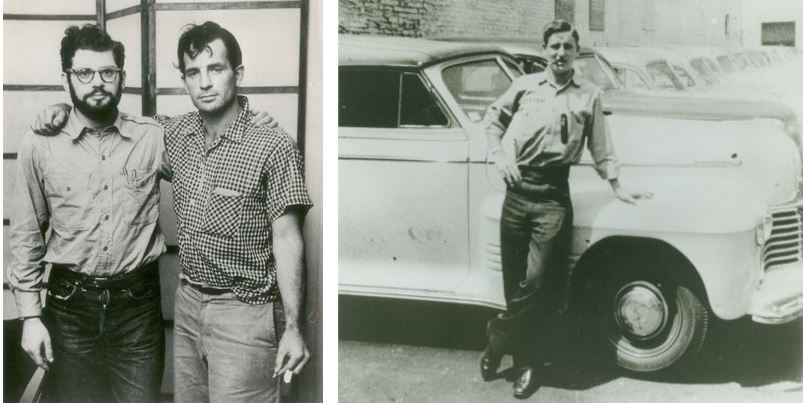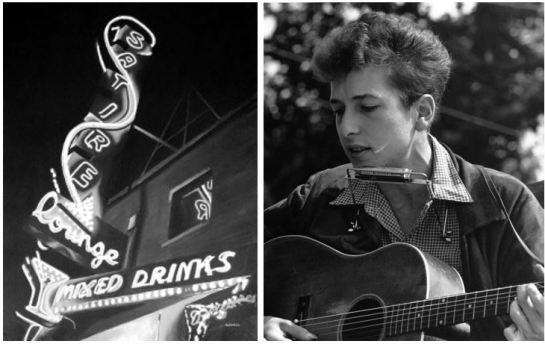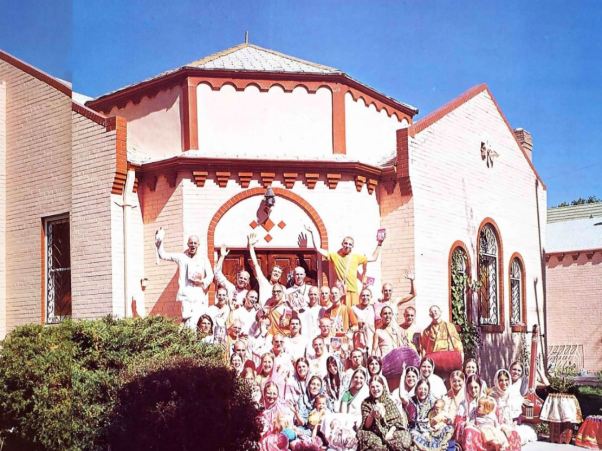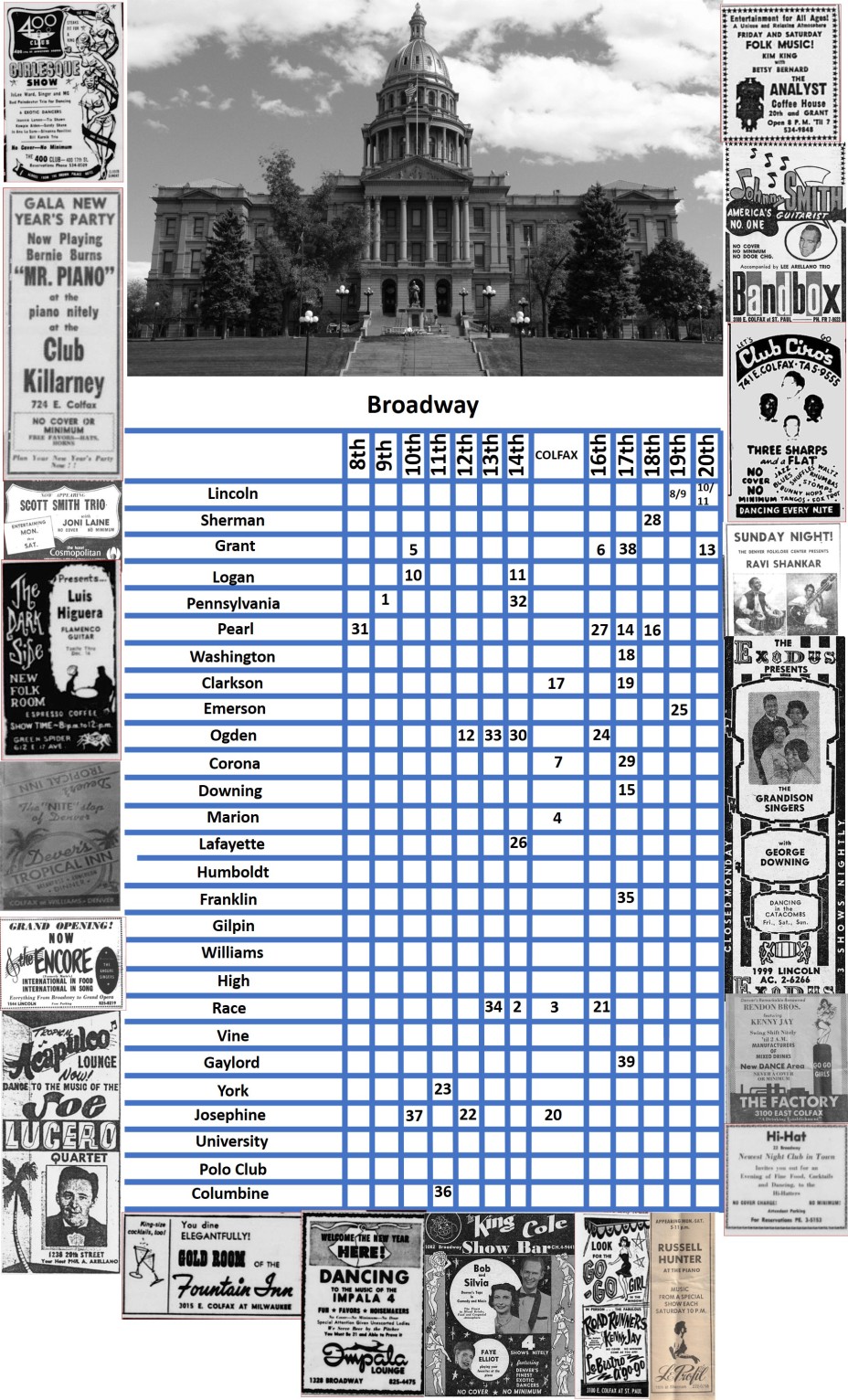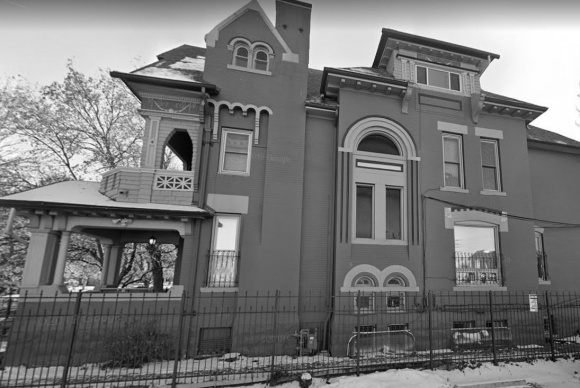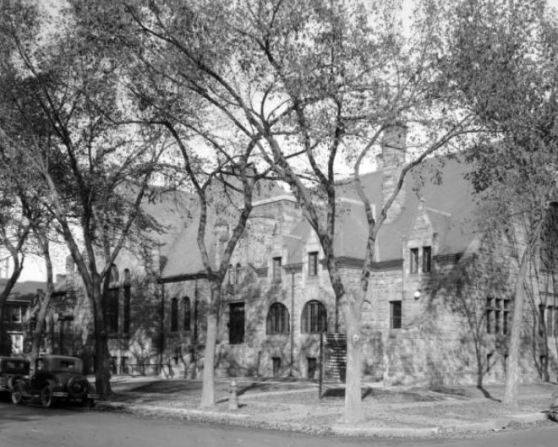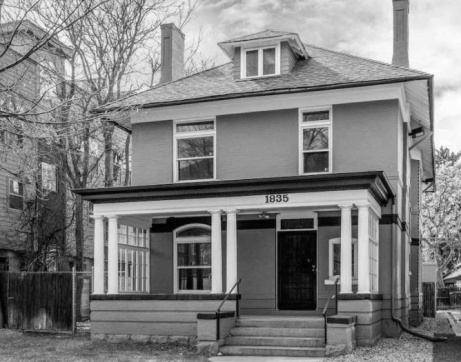Journey Back In Time Along the “Fax”
The Capitol Hill neighborhood has undergone a fascinating history – evolving and regressing over the years. The Colfax corridor east of Broadway was a vibrant early neighborhood bolstered by the traffic and access afforded by Highway 40 (Colfax), an amazing far stretching thoroughfare stretching from Golden, Colorado to the west out onto the eastern plains where it intersects Interstate 70.
There were glory days – and not-so glorious days along the way. Two major developments would occur which changed the Colfax/Capitol Hill landscape dramatically. The first was the completion of Interstate 70 to the north. This alone pulled the rug out from under countless businesses especially traveler-related businesses such as motels, hotels and dining establishments. Suddenly the hotels were in desperate need of a clientele.
The second development was the ‘scraping’ of Denver’s ‘skid row’ – the stretch of rag-tag businesses along lower Denver’s Larimer Street – Think bars/dives, pawn shops, junk stores and so on. If you grew up in Denver back in the 1950’s and 1960’s you know what a quick drive down Larimer between 14th Avenue and 20th Avenue (and further) was like – an adventure to say the least and quite a side-show.
But in 1967 along came the “Urban Renewal Project” and suddenly ‘skid row’ was gone! But what about the crowd who frequented the area? It didn’t take long for them to head east taking refuge in Capitol Hill’s more-or-less abandoned hotels. Also, these events paved the way for hundreds of young women coming from the mid-west and other points outside of Colorado providing them with housing when they would enroll into a couple of educational institutions who recruited aggressively (think Parks and Barnes schools of business – probably others). Typical of the room-and-board facilities was the Mile High Guest House located at 965 Pennsylvania Avenue – Scores of young women would pass through it’s doors (Number 10 on Map).
And then with ‘affordable’ housing awaiting – discharged mental patients from Pueblo would be ‘dropped off’ in the neighborhood in huge numbers – some estimates were as many as 1,500 at any given time. Two such houses were located at the East Side Guest House at 1453 Race Street and the Tower Guest House at 1560 Race Street.
The “Flower Children” Arrive Post “Beats”

So what was next? Well, in the mid 1960’s a movement was afoot and so Denver would become the recipient of – yes – “The Hippies” had arrived! Part of their fascination with this new gathering place (so far from Haight-Asbury in San Francisco) was the preceding reputation Denver had gained through some distinguished persons who had off and on made Denver their ‘stomping’ grounds – mostly during the 1940’s
This included a one-time resident of 1522 Lafayette Street (Jack Kerouac), the Colburn Hotel at 10th Avenue and Grant Streets (Neal Cassady) and a poet down the street at 16th and Grant (Allen Ginsburg) – all members of the Post World War “beat generation”.
Cassady actually attended Denver East High but failed to graduate. He did receive an honorary degree from East in 1968. Cassady would later be cited as being the “bridge” from the Beat Generation to the Hippies – which bears up with his membership in San Francisco’s zany “Merry Pranksters”. Fellow Prankster Ken Kesey – author of “Sometimes A Great Notion” and “Flew Over the Cuckoo’s Nest” had even stronger ties to Colorado that Neal – being born in La Junta in 1935.
Another luminary made his way to Denver’s Capitol Hill in 1960 where he would briefly appear at the Satire Lounge on Colfax and then at nearby Central City’s Gilded Garter where Denver resident Judy Collins would appear. Dylan would briefly reside at 1736 East 17th Avenue – today simply an empty lot awaiting a new future.

Dylan and Collins – Gilded Garter Vets
The Counter-Culture Organizes
In the spirit of the time, many groups would congregate in Capitol Hill to serve the newly arrived community. Typical were the “Movement Clearing House on Josephine Street, the “Denver Learning Community” on York Street, the “Hip Help Center first on 17th Avenue and then Emerson, the “Switchboard” – a help center for Hippies in need and Denver Free University – started up by disgruntled University of Denver students. They were booted off the DU campus and made their way to the YWCA building at 18th and Sherman.
Later they would be replaced by Colorado Free University but by then the spirit and intent had been diluted.
Other groups would swarm to the neighborhood: the “Order of the Holy Family of the Donati Brothers” serving the needs of flower children, the Unification Church located at 1400 Race Street (better known as the “Moonies”. Hare Krishna was well rooted in Denver’s Capitol Hill before moving later further south on Cherry Street. There was the “Denver Zen Center”, “Sikh Dharm” and many more.
Underground publications would serve the neighborhood like the “Mile High Underground” and “Chinook” to name a few. “Chinook” would later merge with the Boulder publication the “Straight Creek Journal” in 1972.

End of one Era/Beginning of a New Era
The 1970’s rolled in and the Hippies had all but disappeared – subject to pressure from neighborhood groups and the police department – the euphoria of the ‘Flower Children’ had faded away – again opening up an opportunity for other elements to ‘invade’ Capitol Hill.
Dive Bars became headquarters for gangs – organized crime moved in and the sex industry would flourish. Movie houses would convert to porn shops and drug usage would soar.
L.A. gangs – most dramatic being the “Rolling 30 Crips”, would migrate to the area and stretch out east along Colfax as far as Aurora.
Somehow through it all, Capitol Hill managed to survive. There would be revivals. The Bluebird Theater would convert to big time entertainment and Mammoth Garden would reopen. New nightclubs would open but more prominently, trendy eating establishments would emerge.
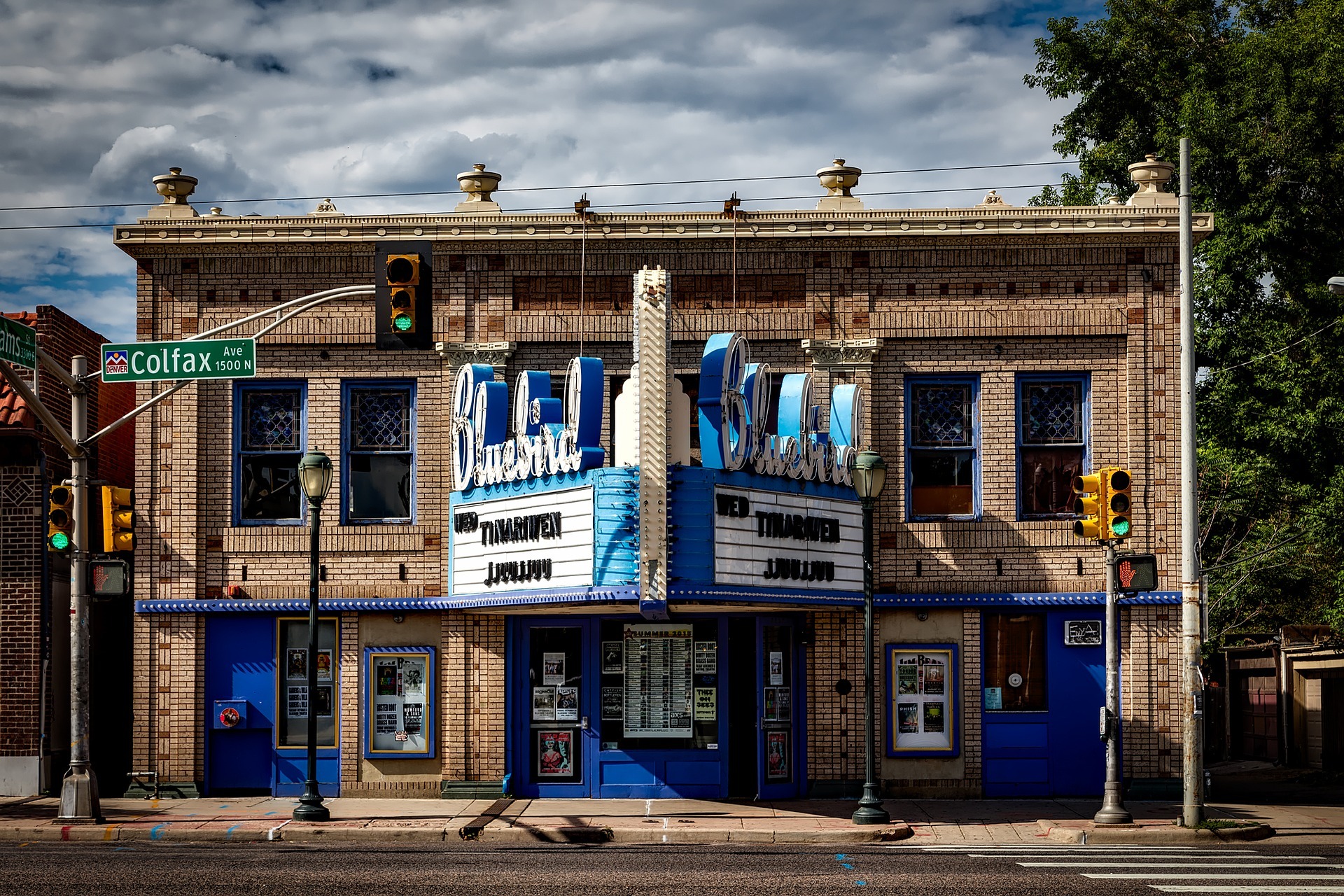
Bluebird Revival
Homes would be flipped and the Millennials would move in in big numbers. Neighborhood organizations would again organize and community pride would once again arise.
Cruising the Colfax Capitol Hill Corridor Back in the Day
As you can see, the Capitol Hill corridor establishments and landmarks ran predominately from Broadway east paralleling Colfax – and for the most part three to four blocks to the north side of Colfax.
This was a vibrant scene in Denver beginning back in the mid 1960’s and continuing on into the early 1970’s before things began to fall apart. For many us, much of this scene ran it’s course without us being very involved. News coverage was minimal as far as I can remember unless there was some sort of crisis or dramatic event. Folks didn’t routinely gather at the Capitol carrying out mundane card-board sign protests – coming in from the suburbs and returning to the comfort of their homes the same night.
The diagram below presents many of the places that made up the scene in those long ago days. Of course, not everything is listed here – just a nice sampling of a time in Denver – long ago – Time sure went fast. We can only now ponder where will this crazy world take us next?
(The numbered locations are presented after the chart – Numbers sometimes positioned in a square where they should straddle two squares)
Landmark Number 1 – The Mile High Guest House – 965 Pennsylvania Street
One of the early boarding house for young women streaming into Denver to attend one of Capitol Hill’s or nearby business schools.
Landmark Number 2 – East Side Guest House – 1453 Race Street
Patients from the State Hospital in Pueblo were dropped off here as well as other locations such as the Tower Guest House below
Landmark Number 3 – The Tower Guest House – 1560 Race Street
Landmark Number 4 – Jack Kerouac Temporary Residence – 1522 Lafayette Street
Jack resided at numerous Denver locations around the Capitol Hill neighborhood and he owned a house in the west suburb of Lakewood for a time
Landmark Number 5 – Neal Cassady Residence – The Colburn Hotel 10th Avenue & Grant
Temporary home for Neal Cassady in his beatnik days – He lived at several locations during his growing up years and attendance at Denver East High School

Landmark Number 6 – Allen Ginsberg Residence – 10th & Grant
The Beat poet Ginsberg found his way to Denver – no doubt due to Kerouac and Cassady’s prescence.
Landmark Number 7 – The Nowhere Tap – 1175 Colfax
Opened in 1958 – a Capitol Hill beat hangout among other things
Landmark Number 8 – The Lido – 20th & Lincoln – Number 9 – 127 20th Avenue
The Lido was a true “beatnik” hangout in the late 1950’s – It moved to the 127 address
Landmark Number 10 – The Exodus – 20th & Lincoln
Located in the basement of the Raylane Hotel – Started up in 1959 by Hal Neustaeder – The late folk singer Walt Conley managed the Exodus and appeared there often
Landmark Number 11 – Sign of the Tarot – 118 20th Avenue
A beat coffee shop that opened in 1959 – Would move later into the space previously occupied by The Analyst
Landmark Number 12 – The Village Coffee House – 14th Avenue & Odgen
Another beat coffee shop
Landmark Number 13 – The Analyst – 311 20th Avenue
Landmark Number 14 – The Denver Folklore Center – 17th Avenue & Pearl Street
Harry Tuft was the founder of this Denver landmark in 1962 – He expanded it to include a record store and a performing stage at 1893 Pearl Street
Landmark Number 15 – Biscuit City Records – 17th Avenue & Downing Street
A Folk based label located in the Capitol Hill neighborhood
Landmark Number 16 – The Green Spider & The Dark Side Theater – 610-612 17th Avenue
Founded in 1960 by Donn Lehn – Would be acquired by the Folklore Center eventually
Landmark Number 17 – Mammoth Gardens – Clarkson Street and Colfax
KIMN DJ Pogo Poge hosted a Saturday Teen Dance here for nearly two years bringing many national and local groups
Landmark 18 – Together Books – 636 17th Avenue
Landmark Number 19 – The Radical Information Project – 737 17th Avenue & Number 20 – 2412 Colfax
The Project was founded by members of Students For a Democratic Society. They moved later to 2412 East Colfax – I remember meeting three members of SDS in the Colorado State University student union cafeteria in Fort Collins as early as 1965
Landmark Number 21 – Students for a Democratic Society House – 16th Street & Race
Landmark Number 22 – The Movement Clearing House – 1263 Josephine Street
One of many community service houses serving the counter culture
Landmark Number 23 – The Denver Learning Community – 1170 York Street
Started up in the late 1960’s – The Learning Community would be shocked to learn that today it is listing at a sale price of one million dollars!
Landmark Number 24 – The Hip Help Center – 1002 17th Avenue – & Number 25 1900 Emerson Street
Founded in 1969 –
Landmark Number 26 – The First Unitarian Church – 14th Avenue & Lafayette Street
This secular church embroiled itself into many ‘unpopular’ causes during the 1960’s – supporting the hippies and counter culture – In 1975 the church would perform the State’s first same-sex marriage
Landmark Number 27 – The Switchboard – 1660 Pearl Street
Was established as a help center and message exchange location for Denver’s hippies – Established by the Youth Coalition War On Poverty
Landmark Number 28 – Denver Free University – YWCA Buidling 18th and Sherman – Number 29 – 1122 17th Avenue
Later moved to 1122 17th Avenue
Landmark Number 30 – The Colfax Street Sheet – 1423 Ogden Street
This counter culture newspaper was distributed by hippies to provide them with income – It would become “Solid Muldoon” – Then the “Mountain Free Press” at 309 Columbine Street and finally merging with the “Teleidoscope Collage” in 1967
Landmark Numbers 31-32-33 – Chinook Magazine – First Location 847 Pearl Street
Underground newspaper also working out of 1452 Pennsylvania Street and 1031 13th Avenue – Would become the “Denver Urban Renewal Authority” and later merged with the Boulder magazine the “Straight Creek Journal”
It ran from 1969 until 1972 after publishing nearly 120 issues.
Landmark (Not Shown) – Order of the Holy Family of the Donait Brothers – 2015 Glenarm Place
Another church serving beat generation and then the ‘flower children’ – Located in St. Andrews Episcopal Church
Landmark Number 34 – The Unification Church – 1400 Race Street
The congregation were more known as the “Moonies” – They operated a youth hostel (next) – The Moonies were known for their massive wedding ceremonies in tribute to the Reverend Moon
Landmark Number 35 – Unification Church Youth Hostel – 16th and Franklin
Landmark Number 36 – The Denver Zen Center – 1233 Columbine Street
Many hippies were drawn into Buddhist temples around the nation – Denver’s Zen Center was very active in the Capitol Hill neighborhood in the 1960’s
Landmark Number 37 – Sikh Dharma – 1072 Josephine
A ‘white’ Sikh sect lights the flame
Landmark Number 38 – La Petite – 331 17th Avenue
La Petite was a hippie all-night gathering spot located in the old Mayflower Hotel

Landmark Number 39 – The Provo House – 1835 Gaylord Street
Another hippie haven in the 60’s – Today it has been parceled into eight office spaces and was assessed at around 900,000 dollars in 2020


